How to Choose the Perfect Clock to Suit Your Home Interior
From tiny decorative mantel clocks to enormous wall timepieces, choosing a clock for the home isn’t a straightforward decision, at least if you want one to suit your needs.
Now that we all carry smartphones everywhere, strap smartwatches to our wrists and can even count on the oven and microwave timers, clocks in the home don’t necessarily fulfil their original purpose these days.
But this point alone doesn’t render the domestic clock obsolete. In fact, this couldn’t be further from the truth! Just how mechanical watches are sought after due to their unique design and jewellery appeal, clocks in the home now fulfil a similar purpose.
From industrial, mid-century pieces that finish off your 1950s themed lounge to retro alarm clocks that provide the ideal accent piece to your bedside table, this week we’ve composed your guide to choosing the perfect clock to suit your home interior.
Let’s start the timer!
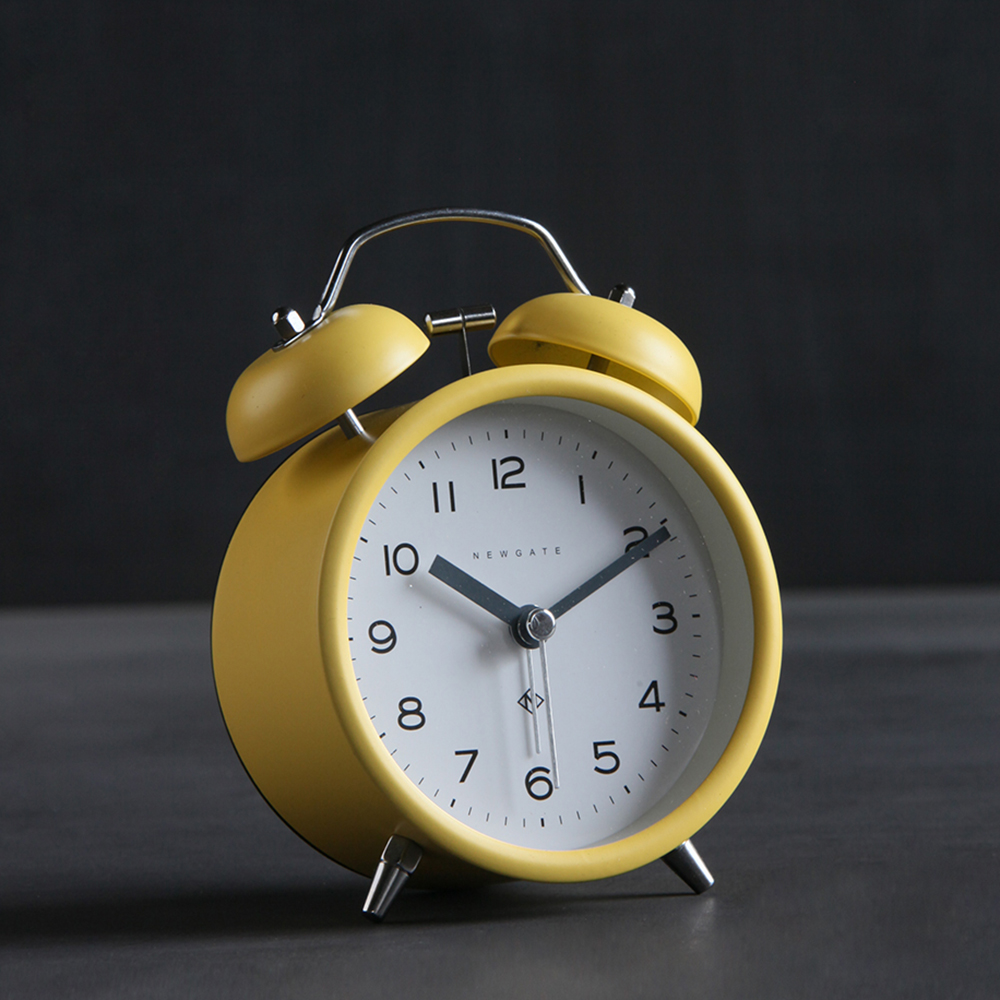
Size Matters
Like any home accessory, size and scale are crucial factors to consider when choosing a timepiece. Naturally, smaller clocks are suited to more compact rooms and vice versa.
In terms of wall clocks, the average size ranges from around 6 to 18 inches in diameter. Our Luggage Wall Clock (below) boasts a sensibly sized diameter of 11.8 inches (30 cm), which sits in the middle of the range and offers a ‘one-size fits all’ approach. The galvanised metal casing is great for a vintage, mid-century industrial setting.
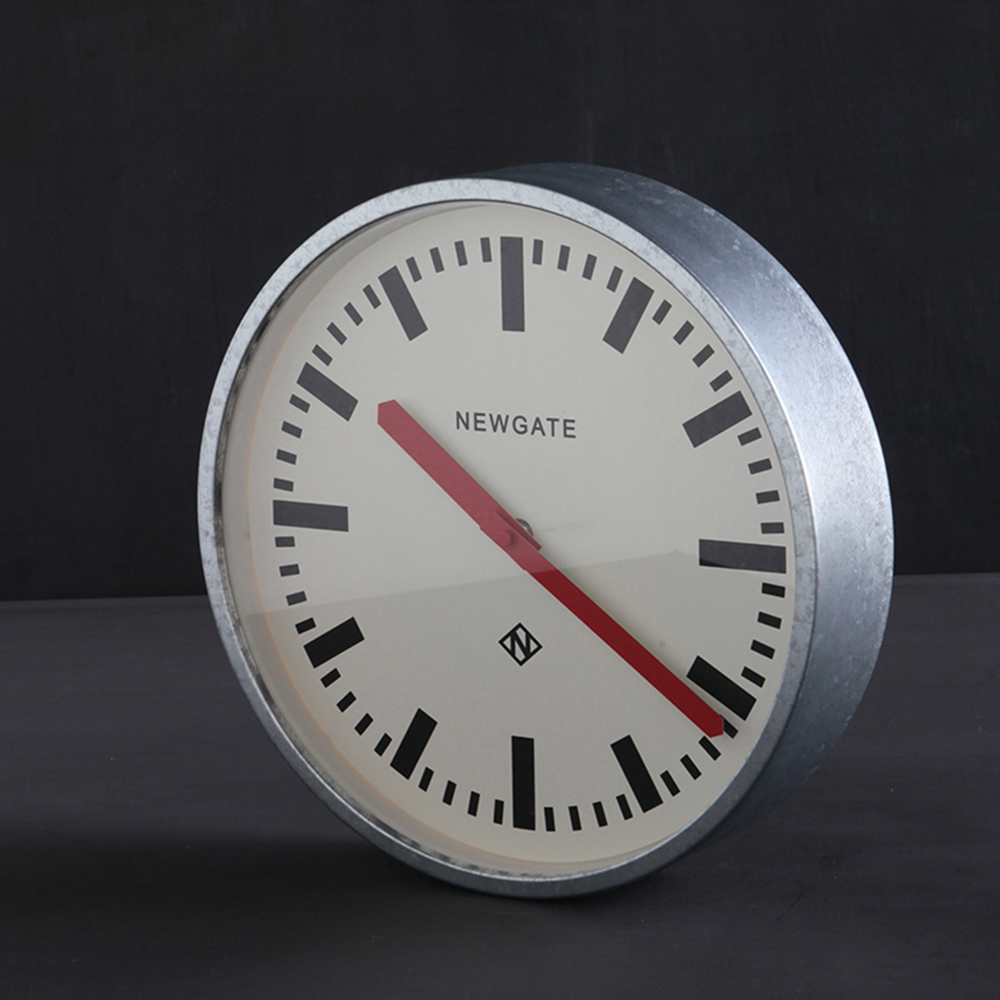
Any piece larger than the 18-inch limit is better in significantly spacious rooms with considerable distance between you and the clock. Timepieces smaller than the 6-inch diameter are generally better for bedrooms and spare rooms, where they can blend in with other pieces of furniture.
If you’re unsure about size before buying, here’s a little trick that also works for rugs and mats. Copy the clock’s dimensions down on to some paper or card and cut out a disposable mock-up. You can then place this on a wall to visualise the measurements before buying.
Be careful when looking up timepiece measurements online, as some manufacturers give the ‘clock hand’ length rather than the diameter. As the graphic below explains, the clock hand length is essentially the radius (half the diameter).
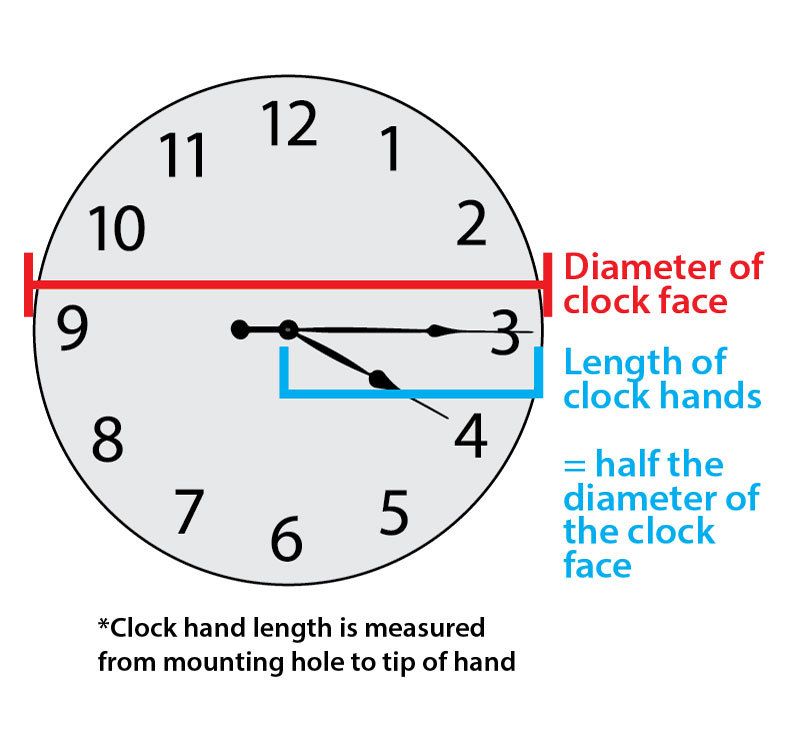
Credit - Pinterest
Select the Correct Theme
It’s easy to shop around for a particular theme of décor for most furniture, whether you’re looking for bar stools, dining chairs, tables or cushions.
But when it comes to clocks, you’d be surprised how many people forget about the style and pick something they like without considering where it’s going to live. Just think - a wooden clock in an industrially themed living room will stick out like a sore thumb!
Try to match like-for-like unless you want your timepiece to act as a foil to the rest of your home décor. For example, if you’ve got lots of brass metal in an industrial bedroom, match it up with our Charlie Alarm Clock.
This is a stylish retro piece with a traditional bell alarm, ideal for placing on a nightstand or cabinet in a minimalist, metal-influenced room. The clean face is also a great option if you don’t want something distracting.
Alternatively, a wooden clock made with rustic, natural materials can enhance a bohemian interior, so just use your common sense.
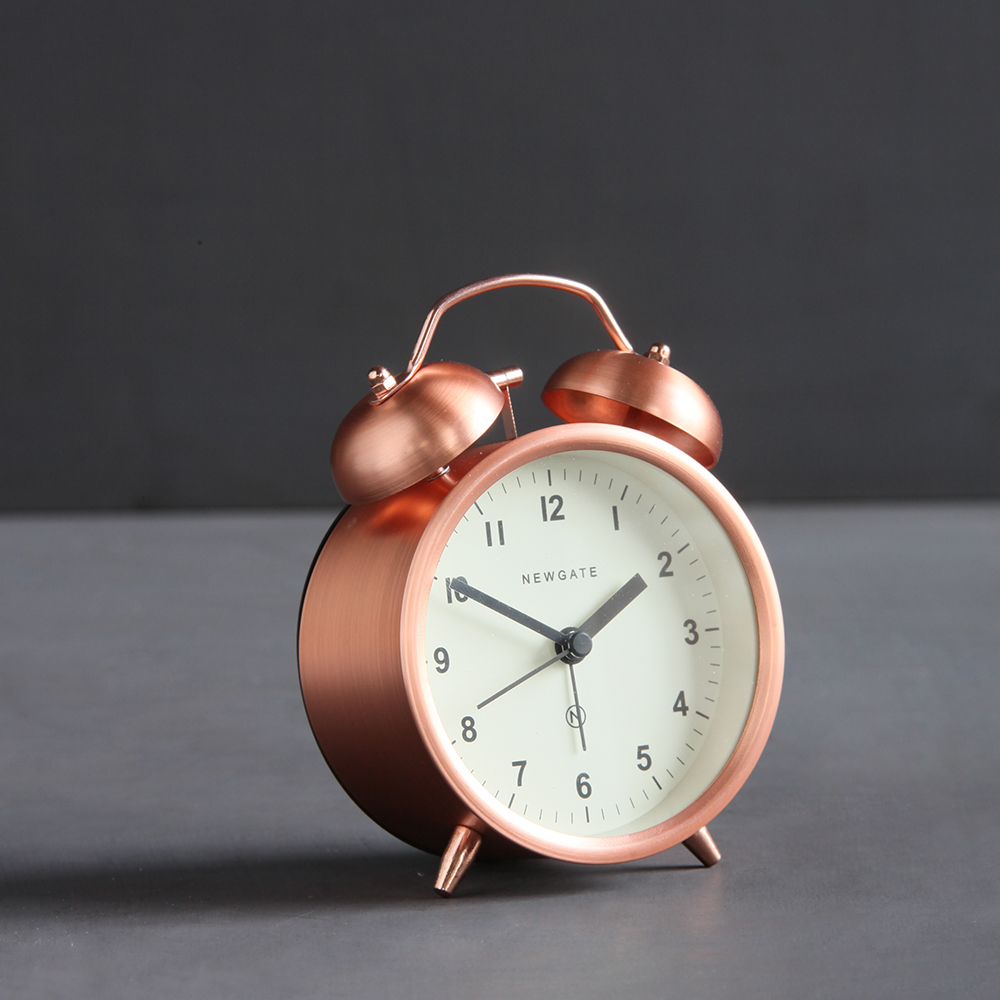
Digital or Analogue?
Given that we’re surrounded by phones that constantly provide us with hyper-accurate digital time, analogue clocks are generally more popular now due to their more traditional approach to timekeeping.
But don’t let this put you off a digital clock. Thematically speaking, analogue clocks tend to look better in the living room or kitchen as a decorative piece, whilst digital clocks are more suited to a bedroom as they come fully loaded with extra features.
This decision comes down to both your needs and style preferences. By way of example, digital clocks are far more accurate as they keep perfect time down to the second – do you need this level of accuracy?
On the other hand, analogue clocks are often more imaginative, aesthetically. There is scope for some eclectic or classic designs within the hands, face and casing.
Digital clocks, however, have more adaptability and customisability. For instance, you can increase the brightness of many digital alarms, making them brilliant in low light areas (especially a bedroom).
Our Lunar LED Clock can show both 12 and 24-hour time, features a snooze mode, temperature display, automatic dimming, beep alarm and two brightness settings. How many analogue clocks can boast that?
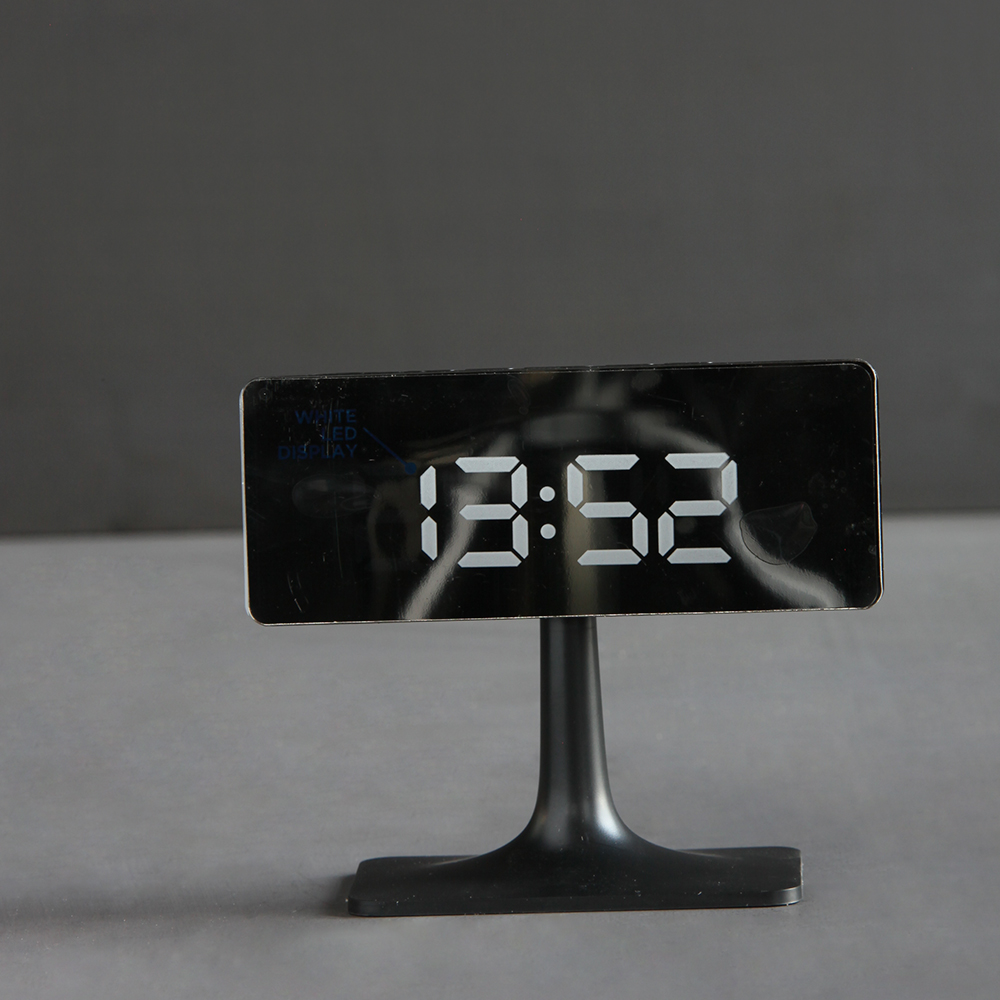
Location, location, location…
OK, so after taking materials, style, design and features into account, all that’s left to do is find space for your new clock. A large wall clock needs to be positioned somewhere that everyone can see, so always place it above the tallest obstruction in your chosen room. This way, you’ll always be able to read it over any other furniture.
Try to leave at least 4 to 6 inches of room around the wall clock, giving it some breathing room.
Take natural elements into account as well. For instance, placing a glass-faced clock near a window isn’t the best idea, as reflections and glare will make it hard to read during the day. Also, don’t put a wall clock behind a door that opens inwards and covers it up - there’s much point in a clock that’s obscured half the time (pardon the pun!).
A mantel clock looks best at eye level. Due to their smaller size, mantel clocks are great for displaying on mantelpieces, windowsills and side tables where you can easily read them from a seated position.
Many mantel clocks follow a traditional design, but we have a few mid-century mavericks up our sleeve! Our retro Mantel Clock, for example, has a striking vintage design, right down to the typeface of the numbers, letters and chapter ring. The black acrylic case contrasts sharply with the cream face, drawing the eye towards its unique design.
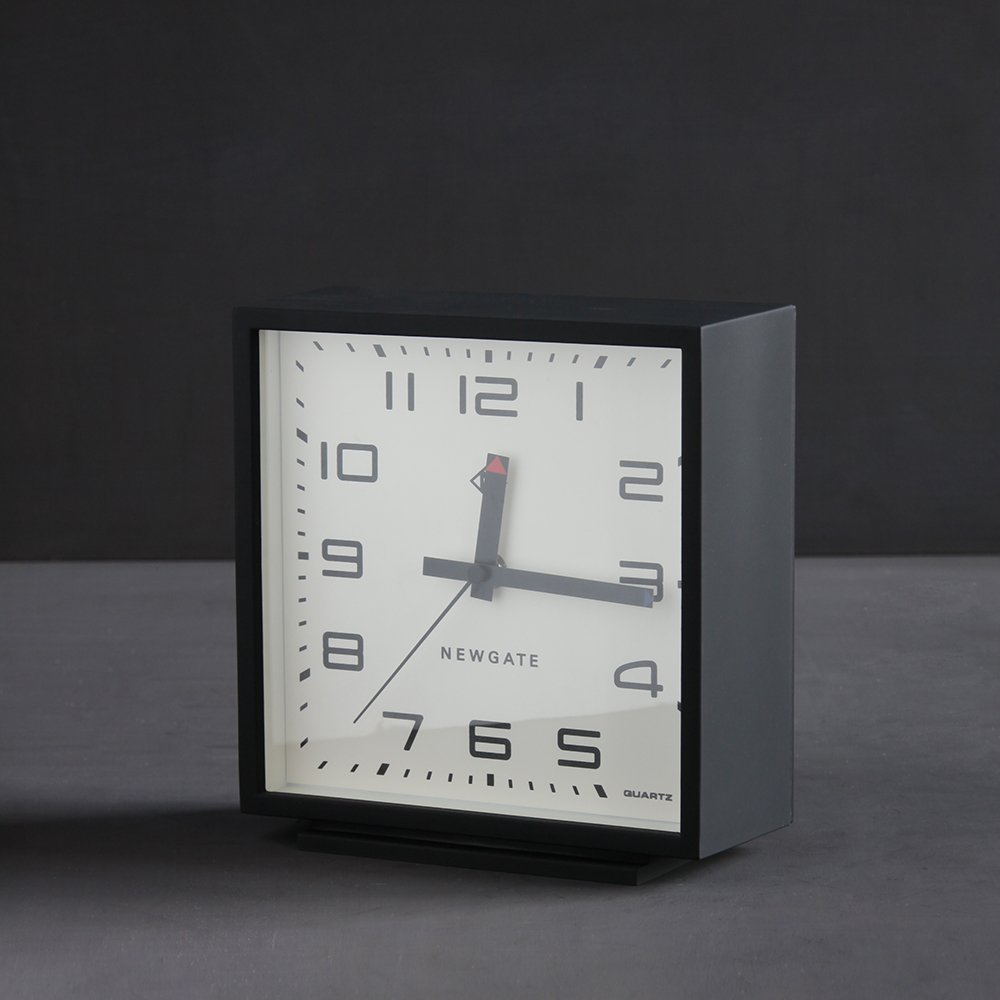
Clocks may have outlasted their original purpose before our phones gave us the accurate time, but their new function as a decorative accessory for our homes makes them more appealing than ever.
With a few carefully considered tips from this blog post, you’ll soon have a fantastic new timepiece that adds embellishment wherever you place it. Clocks are a homeware staple that blend form and function perfectly.
Check out the rest of our Clocks and Home Accessories ranges to discover more.
Feel the Love!

